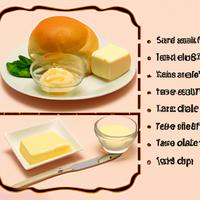
1 serving (70 grams) contains 200 calories, 5.0 grams of protein, 7.0 grams of fat, and 30.0 grams of carbohydrates.

Log this food in SnapCalorie

Nutrition Information
Calories |
675.7 | ||
|---|---|---|---|
% Daily Value* |
|||
| Total Fat | 23.6 g | 30% | |
| Saturated Fat | 10.1 g | 50% | |
| Polyunsaturated Fat | 0 g | ||
| Cholesterol | 50.7 mg | 16% | |
| Sodium | 1013.5 mg | 44% | |
| Total Carbohydrates | 101.4 g | 36% | |
| Dietary Fiber | 3.4 g | 12% | |
| Sugars | 13.5 g | ||
| protein | 16.9 g | 33% | |
| Vitamin D | 0 mcg | 0% | |
| Calcium | 168.9 mg | 12% | |
| Iron | 5.1 mg | 28% | |
| Potassium | 270.3 mg | 5% | |
* Percent Daily Values are based on a 2,000 calorie diet. Your daily values may be higher or lower depending on your calorie needs.
Food Attributes
Source of Calories
About Buttered bun
A buttered bun is a simple yet flavorful baked item often enjoyed as a snack or accompaniment to meals. Typically made from a soft bread roll, its main ingredients include flour, water, yeast, and sometimes sugar or milk for added richness. The bun is lightly toasted or warmed before being coated with butter, which adds a creamy texture and savory taste. Originating from Western cuisine, buttered buns are popular globally and are often paired with soups, barbecues, or breakfast spreads. While delicious, buttered buns are not always the healthiest option. The bread provides carbohydrates for energy, but the butter adds significant fat and calories, particularly if heavily applied. Some buns may also contain added sugars or refined flours, which offer minimal nutritional benefit. For a healthier twist, whole-grain buns and smaller portions of butter can be used to reduce calories and increase dietary fiber.



